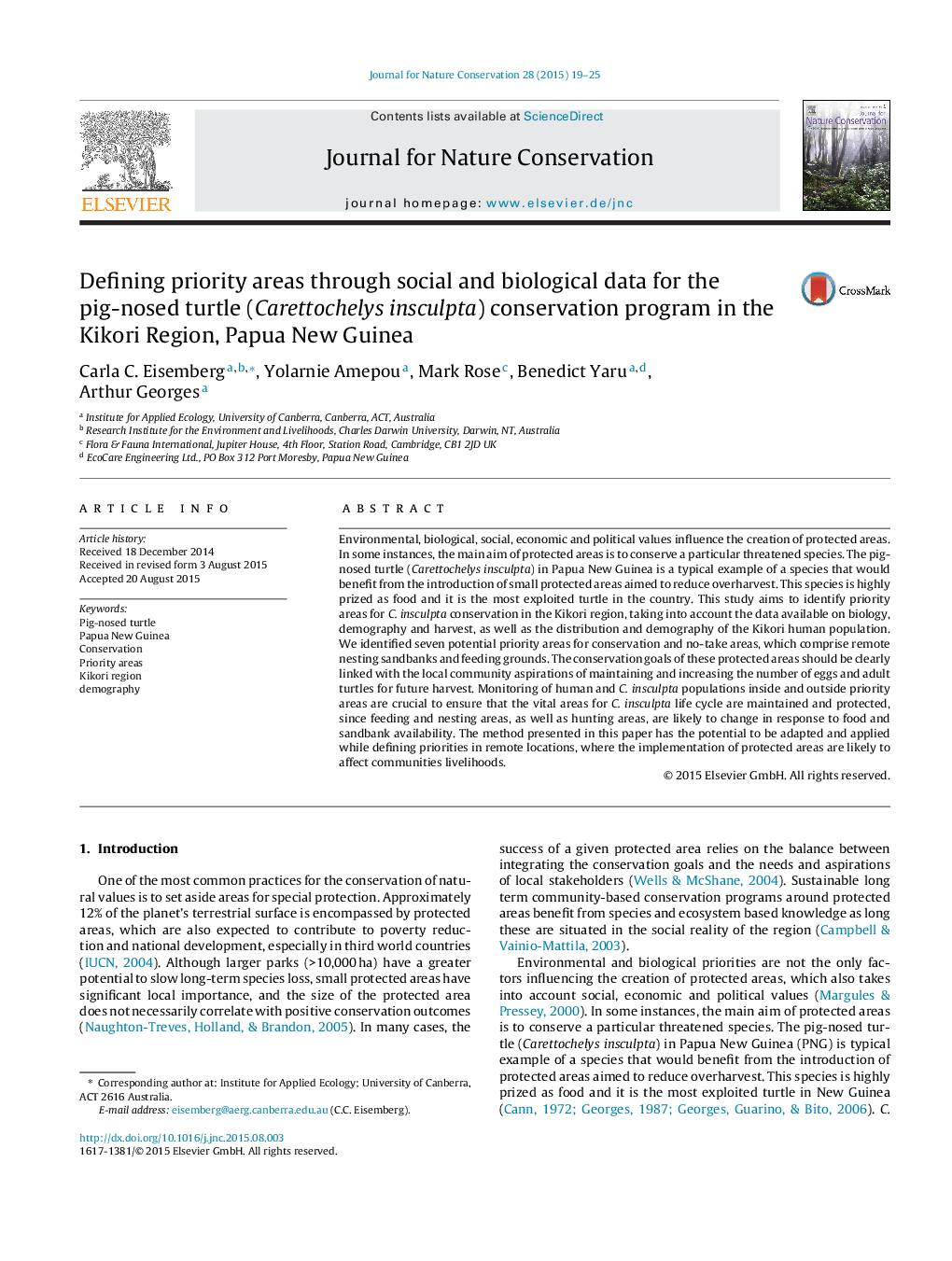| Article ID | Journal | Published Year | Pages | File Type |
|---|---|---|---|---|
| 4399782 | Journal for Nature Conservation | 2015 | 7 Pages |
Environmental, biological, social, economic and political values influence the creation of protected areas. In some instances, the main aim of protected areas is to conserve a particular threatened species. The pig-nosed turtle (Carettochelys insculpta) in Papua New Guinea is a typical example of a species that would benefit from the introduction of small protected areas aimed to reduce overharvest. This species is highly prized as food and it is the most exploited turtle in the country. This study aims to identify priority areas for C. insculpta conservation in the Kikori region, taking into account the data available on biology, demography and harvest, as well as the distribution and demography of the Kikori human population. We identified seven potential priority areas for conservation and no-take areas, which comprise remote nesting sandbanks and feeding grounds. The conservation goals of these protected areas should be clearly linked with the local community aspirations of maintaining and increasing the number of eggs and adult turtles for future harvest. Monitoring of human and C. insculpta populations inside and outside priority areas are crucial to ensure that the vital areas for C. insculpta life cycle are maintained and protected, since feeding and nesting areas, as well as hunting areas, are likely to change in response to food and sandbank availability. The method presented in this paper has the potential to be adapted and applied while defining priorities in remote locations, where the implementation of protected areas are likely to affect communities livelihoods.
